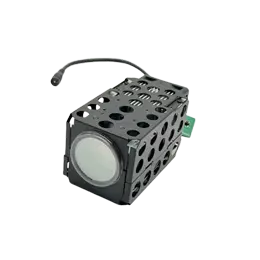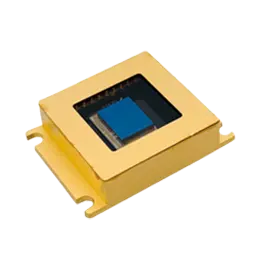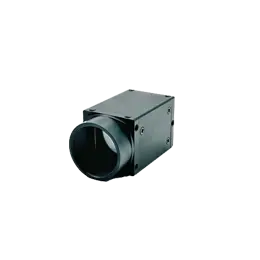Infrared lens means that the transmittance of the long-wave band (700-950nm) of the infrared spectrum is very high, and the lens has a control device to control the passage of long-wave infrared.
The infrared lens is used together with a high-performance day and night fog-penetrating camera. Even in the visible light (color image) environment such as fog, dust, smoke, and light rain, the short-wave infrared camera can capture very clear, high-contrast black and white images. Compared with ordinary lenses, the long-distance observation effect is improved by 3-5 times.
Using the principle that near-infrared light can diffract tiny particles, near-infrared color filters, coating technology and electronic image enhancement technology are used in misty weather to penetrate mist. The monitoring distance is more than 1.5 times that of the visibility, and there is no longer a blind spot for long-distance all-weather security monitoring.
Infrared camera monitoring of marine aquaculture is mainly aimed at monitoring the natural environment, typhoon invasion, theft and invasion of fishing port areas and marine aquaculture functional areas.
In recent years, China's marine aquaculture has strengthened fishery law enforcement management, anti-theft management in aquaculture areas, and natural disaster operations in aquaculture areas. It has begun to introduce video surveillance systems, replacing traditional manual methods with high-tech remote monitoring systems, and large zoom infrared lenses. With its advantages of high definition, telephoto, and fog penetration, it is widely used in China's fishery aquaculture monitoring.
Due to the special use environment and target, the current infrared lens is mostly divided into DC drive and video drive, the aperture can be changed, and there is little manual adjustment.
Due to the physical characteristics of optical technology, it is difficult for the focal length and mirror surface size of infrared lenses to make great breakthroughs in recent years.
Due to the large monitoring range and long distance, a lens with a long focal length is generally used, and the day and night mode can meet the monitoring needs of day and night.
Smoky days are like a brick wall that effectively blocks the light, and it's really hard to take pictures without mastering a bit of wall-climbing. Therefore, the short-wave infrared camera came into being. Its core camera fog penetration technology can clear the blurred images caused by fog, moisture, dust, etc., and improve the picture quality.
Through the combination of optics and algorithms, the short-wave infrared camera automatically adjusts according to the image impurity concentration, compensates the image chromaticity, and obtains a clear image that is closer to the real scene.
The short-wave infrared camera is used together with a high-performance day and night dual-purpose fog-penetrating camera. Even in the visible light (color image) environment such as fog, dust, smoke, light rain, etc., it can capture very clear, high-contrast black and white images, which are more common than ordinary The lens enhances the long-distance observation effect by 3-5 times.
Short-wave infrared cameras are derived from the monitoring needs of long-distance and complex environments. Fog is composed of fine particles floating in the air. The more particles per unit volume, the denser the fog.
Visible light has shorter wavelengths and cannot penetrate mist, which is why visibility is very low on foggy mornings. The wavelength of near-infrared light is longer, which makes infrared light diffract small particles and achieve the purpose of fog transmission.
In the fog mode, the filter will filter out the visible light and only keep the infrared light. With the coating anti-reflection technology, the infrared lens can realize long-distance all-weather monitoring even in the case of extremely low visibility, and it can be maintained in the normal and fog modes. The focal plane does not shift.



